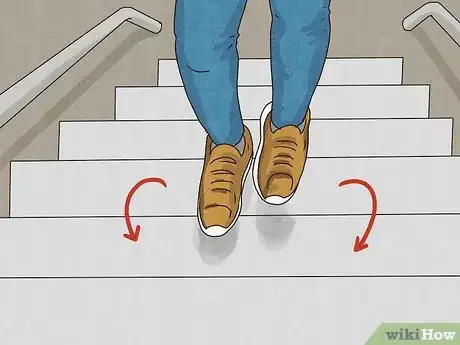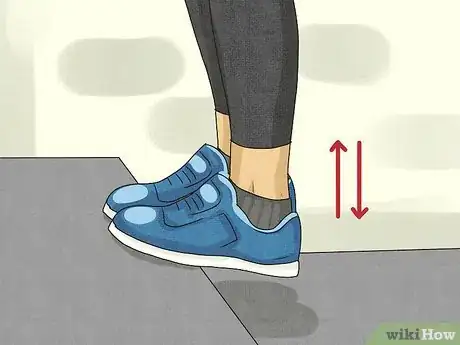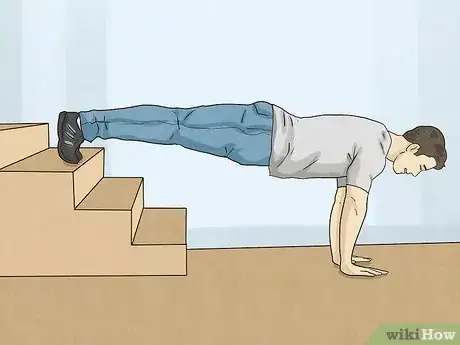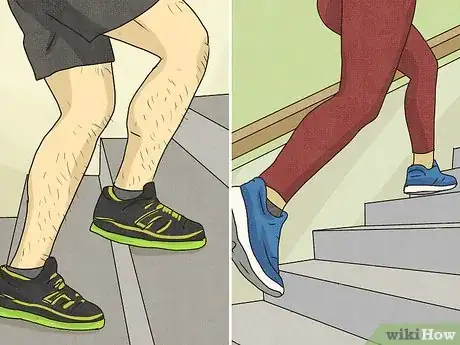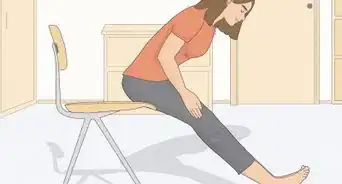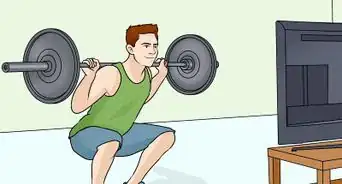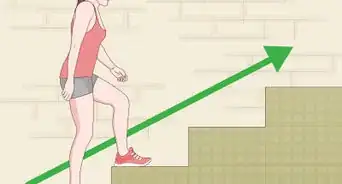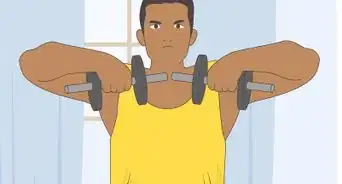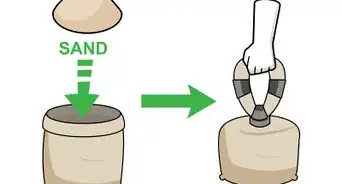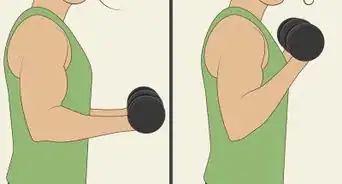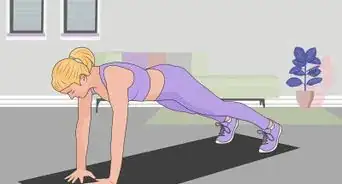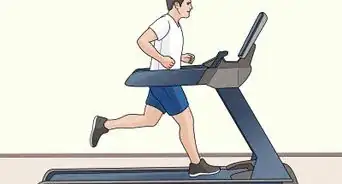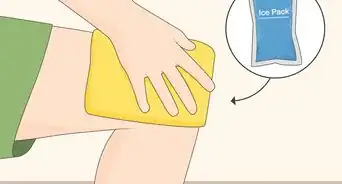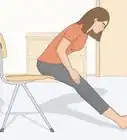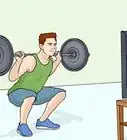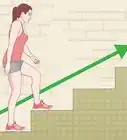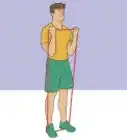This article was co-authored by Brendon Rearick and by wikiHow staff writer, Christopher M. Osborne, PhD. Brendon Rearick is a Personal Trainer, Strength Coach, Fitness Program Director, and co-founder of Certified Functional Strength Coach (CSFC), a fitness education company in the San Francisco Bay Area. With 17 years of experience in the fitness industry, Brendon specializes in strength and conditioning, and his company CSFC has certified over 3,000 trainers in over 20 countries. Brendon has worked as a Program Director for Mike Boyle Strength and Conditioning (MBSC) and earned his massage therapy license from the Cortiva Institute-Boston. Brendon holds a BS in Kinesiology from the University of Massachusetts Amherst.
There are 11 references cited in this article, which can be found at the bottom of the page.
This article has been viewed 95,806 times.
Sure, you can get a great workout with complicated (and expensive) exercise machines, but why not try using something as simple as a staircase? You don’t even have to leave your home to use them, and there are a ton of different exercises you can do on stairs. This article lists several stair-based cardio and strength training exercises, so read on and then hit the stairs for a great workout!
Steps
Expert Q&A
Did you know you can get expert answers for this article?
Unlock expert answers by supporting wikiHow
-
QuestionCan I strength train on stairs?
 Brendon RearickBrendon Rearick is a Personal Trainer, Strength Coach, Fitness Program Director, and co-founder of Certified Functional Strength Coach (CSFC), a fitness education company in the San Francisco Bay Area. With 17 years of experience in the fitness industry, Brendon specializes in strength and conditioning, and his company CSFC has certified over 3,000 trainers in over 20 countries. Brendon has worked as a Program Director for Mike Boyle Strength and Conditioning (MBSC) and earned his massage therapy license from the Cortiva Institute-Boston. Brendon holds a BS in Kinesiology from the University of Massachusetts Amherst.
Brendon RearickBrendon Rearick is a Personal Trainer, Strength Coach, Fitness Program Director, and co-founder of Certified Functional Strength Coach (CSFC), a fitness education company in the San Francisco Bay Area. With 17 years of experience in the fitness industry, Brendon specializes in strength and conditioning, and his company CSFC has certified over 3,000 trainers in over 20 countries. Brendon has worked as a Program Director for Mike Boyle Strength and Conditioning (MBSC) and earned his massage therapy license from the Cortiva Institute-Boston. Brendon holds a BS in Kinesiology from the University of Massachusetts Amherst.
Personal Trainer & Strength Coach
-
QuestionDoes climbing stairs burn calories?
 Community AnswerYes. Climbing stairs can be a great way to burn calories, especially if you run up the stairs as fast as you can. Just be careful not to trip.
Community AnswerYes. Climbing stairs can be a great way to burn calories, especially if you run up the stairs as fast as you can. Just be careful not to trip.
References
- ↑ https://pubmed.ncbi.nlm.nih.gov/28009784/
- ↑ Brendon Rearick. Personal Trainer & Strength Coach. Expert Interview. 30 July 2020.
- ↑ https://sites.macewan.ca/sportandwellness/2018/06/05/squat-jumps-up-stairs-modify-w-squat-steps/
- ↑ https://sites.macewan.ca/sportandwellness/2018/07/10/stair-lunge/
- ↑ Brendon Rearick. Personal Trainer & Strength Coach. Expert Interview. 12 August 2020.
- ↑ https://www.mayoclinic.org/healthy-lifestyle/fitness/in-depth/7-quick-stair-exercises-to-do-at-home/art-20390063
- ↑ https://www.directphysioadvice.co.uk/stair-calf-raises-exercise/
- ↑ Brendon Rearick. Personal Trainer & Strength Coach. Expert Interview. 12 August 2020.
- ↑ https://www.berkeleywellness.com/fitness/exercise/article/stair-climbing-how-get-most-benefits
- ↑ http://wellness.ucr.edu/Stair%20Workouts.pdf
- ↑ Brendon Rearick. Personal Trainer & Strength Coach. Expert Interview. 30 July 2020.
- ↑ https://blog.uvahealth.com/2020/01/08/good-reasons-take-stairs/
- ↑ http://www.cdc.gov/physicalactivity/basics/adults/
- ↑ Brendon Rearick. Personal Trainer & Strength Coach. Expert Interview. 12 August 2020.
- ↑ Brendon Rearick. Personal Trainer & Strength Coach. Expert Interview. 12 August 2020.
About This Article
Exercising on stairs is a great way to get some cardio in while strengthening your legs and glutes. To start, walk up and down the stairs for 5 to 10 minutes to get your heart rate up. Once you’re warmed up, try sprinting for a short time then walking for a short time to build up your endurance. You can also try stair hops by planting both feet on 1 stair, bending your knees slightly, and hopping up to the next stair. If you want to strengthen your legs, do some stair lunges. Simply step your right foot up 2 or 3 stairs and push yourself up until your left leg comes to meet your right leg on the step. You can do this exercise 10 times per leg. Whatever exercises you choose to do, make sure to go slow so you don’t injure yourself. To learn how to make a fitness plan that includes stairs, read on!


